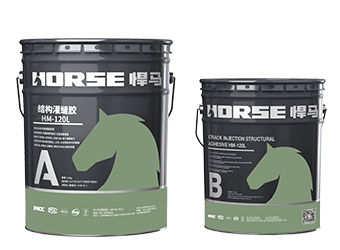Solutions
Horse Construction offers full range of structural strengthening materials with technical supports, documentation supports, products supports, project supports.
application of structural repair and reinforcement technology of seaport wharf
Wharf construction facilities are the basic guarantee for ship transportation in the seaport. my country's early hydraulic building construction design specifications were relatively low. With the rapid development of national water transportation projects, a large number of old port hydraulic structures in service are affected by use and environmental conditions, and the phenomenon of material deterioration and structural function reduction is becoming more and more serious. Therefore, it is urgent to repair and strengthen the structure. Repairing and strengthening structures such as old wharfs and breakwaters is an effective way to ensure their safe use, prolong their service life, and improve their structural capabilities. In recent years, the emergence of some new technologies and techniques has made repair and reinforcement measures more standardized and diversified. However, in practical applications, the repair and reinforcement methods are still affected by various factors such as structural form, damage degree and construction conditions. Therefore, the repair and reinforcement of wharf buildings has certain research value from the perspectives of technology and economy.
Overview of Wharf Project
The wharf is located in the coastal waters of Zhejiang Province. It was built in 1997 with a construction scale of 1 10,000-ton bulk berth, which is mainly used for loading and unloading cargo.
As of 2016, the service life of the terminal building has been close to 20 years. Due to the long-term marine climate environment, and the water area has the characteristics of highest salt content, turbidity, high sediment content, and low sea creatures attachment, it faces multiple corrosions such as sea water and sea fog. Moreover, as an important cargo loading and unloading wharf, the load is large and large ships stop frequently, causing the main structure of the wharf and mooring piers to appear different degrees of damage and defects:
1) There are local cracks and concrete damage in some longitudinal beams, cross beams, and brace systems;
2) Part of the longitudinal beams, strut systems, and cross beams are partially hollowed;
3) Longitudinal beams, cross beams, and track beam reinforcement steel plates have varying degrees of rust or corrosion;
4) Hollowing occurs between the bonded steel plate and concrete of the wharf track beam, and the hollowing rate is greater than 5%. There is a hollowing phenomenon between the reinforced carbon fiber and concrete bonding in some longitudinal beams, and the hollowing rate is greater than 5%;
5) Appearance defects such as partial irregular rust marks on longitudinal beams, beams, and mooring pier pile foundations. The surface rust is that the surface steel fiber in the pile body concrete is exposed to the chlorine ion in the seawater.
Structural repair and reinforcement technical solutions
1) The repair plan fully considers construction technology and other factors, and must not damage the surrounding environment;
2) For the structure and materials used in the repair plan, the rationality of the structure should be fully considered based on environmental factors, and the anti-corrosion design should be emphasized to improve the durability of the structure.
| Damage | Construction plan | |
| Longitudinal beams, beams, strut system cracks | Width less than 0.3mm | Surface closure |
| The width is greater than or equal to 0.3mm | Crack injection | |
| Longitudinal beam, cross beam, brace system and other concrete damage repair | No corrosion of steel bars | Mortar repair |
Rebar has been corroded | Derusting or repair welding steel, mortar repair | |
| Reinforced steel plate for wharf rail beam | Sandblasting and rust removal coating repair | |
| Irregular rust marks on longitudinal beams, beams and strut systems | Silane impregnation | |
| The hollowing rate of track beam steel plate is greater than 4% | Open hole injection | |
| Longitudinal beam reinforced carbon fiber hollow drum is greater than 4% | Remove old carbon fiber and overlap new carbon fiber | |
Longitudinal beam reinforced hollow drum with carbon fiber
According to the inspection report, it is known that part of the longitudinal beams of the wharf are hollowed out between the bonded carbon fiber and concrete, and the longitudinal beams with a hollowing rate greater than 4% are treated with a carbon fiber overlap coating reinforcement scheme. Carbon fiber hollow drum reinforcement construction process:
Remove the old carbon fiber at the hollow drum
Reasonably polish along the hollow drum
Cut new carbon fiber cloth and apply dipping glue on the component
Paste new carbon fiber sheet
Paste treatment at the old and new overlap
Apply dipping glue to the carbon fiber sheet again
Quality defect detection and repair
The test results show that: the part of the longitudinal beams with carbon fiber hollowing rate greater than 4% is lapped with new carbon fiber, and the appearance is smooth after repair, and the hollowing rate is controlled below I. 5%. That is, the total effective bonding area is greater than 98.5% of the total bonding area, and the positive tension bonding strength is excellent
Sum up
After repairing and strengthening the harbour wharf structure, the effect is good and the strengthening strength is excellent. The repair and reinforcement technology adopted is economical and effective, ensuring the continuous and safe operation of the seaport terminal.
You can find anything here you are in need of, have a trust trying on these products, you will find the big difference after that.

High strength carbon fiber reinforced polymer (CFRP) strip / laminate / plate for structural strengthening and concrete repair

Very strong penetration and low viscosity epoxy crack injection adhesive for repairing concrete crack

High strength, unidirectional carbon fiber sheet pre-saturated to form a carbon fiber reinforced polymer (CFRP) sheet used to strengthen structural concrete elements.